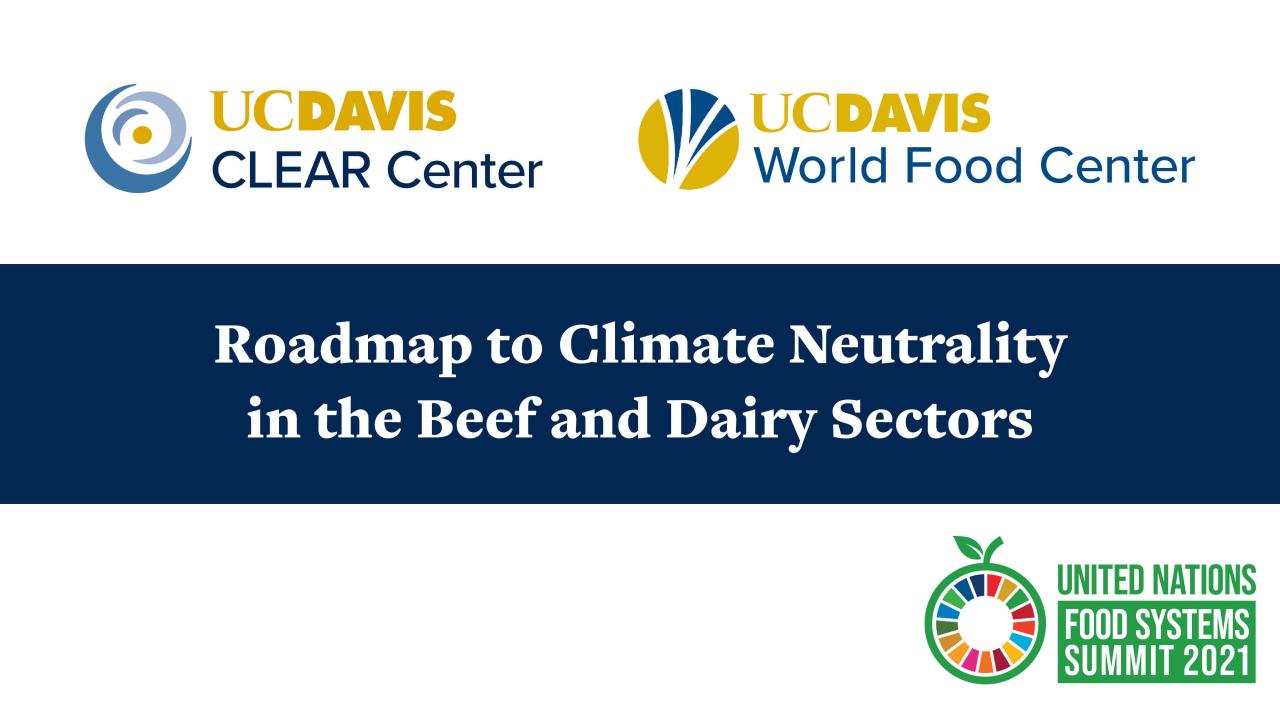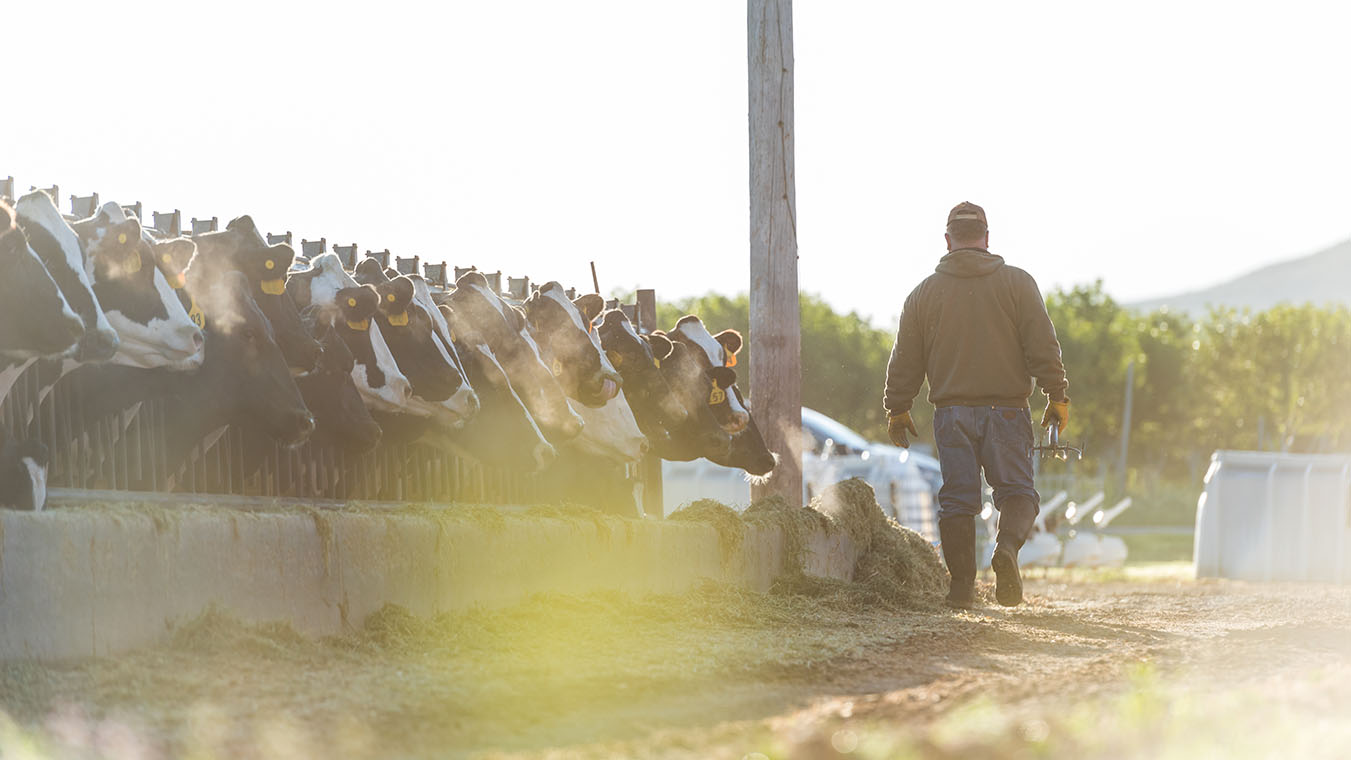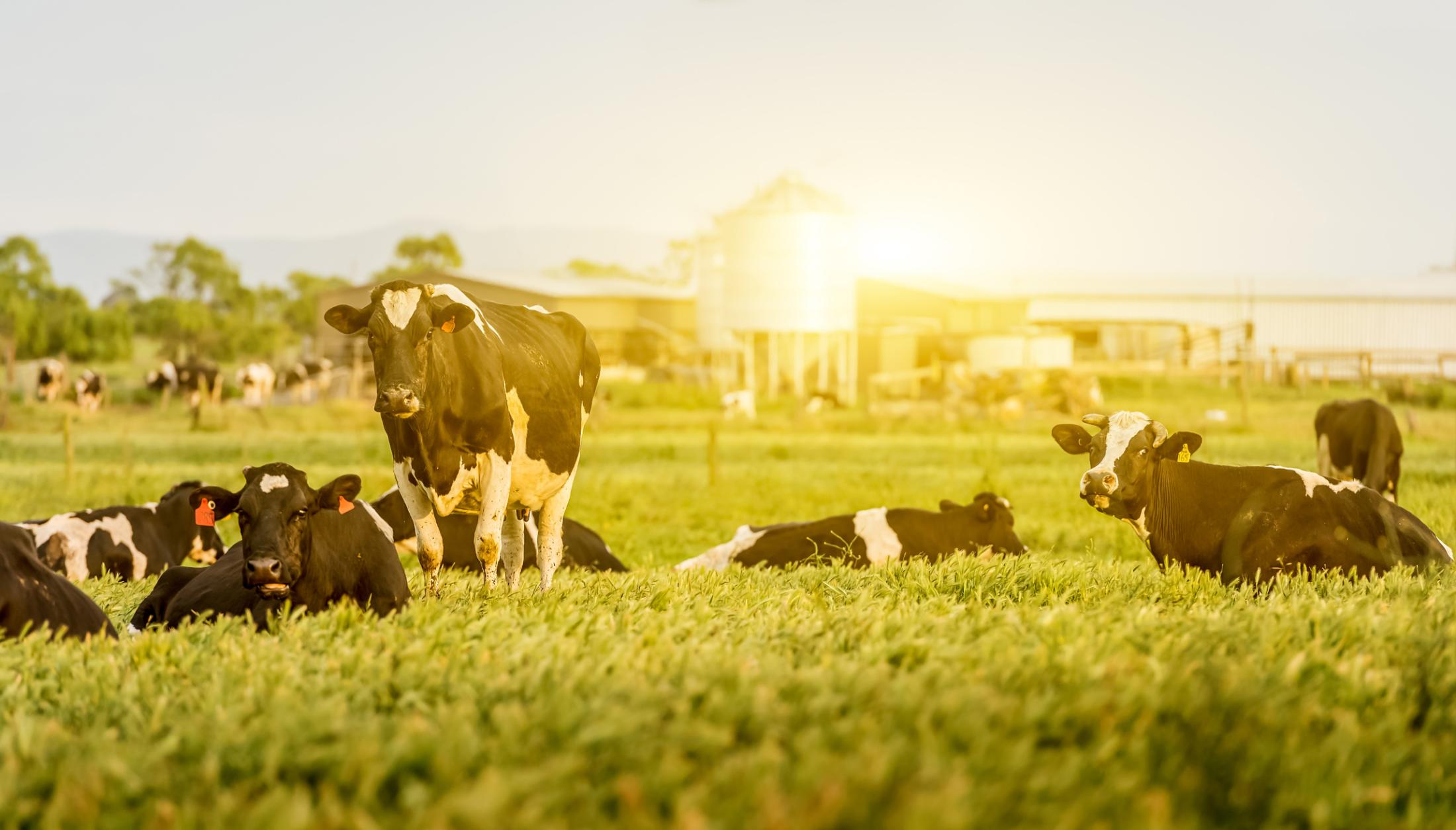
UC Davis CLEAR Center and World Food Center Convene Independent Dialogue for the UN Food Systems Summit
The dialogue was titled: Roadmap to Climate Neutrality in the Beef and Dairy Sectors
The United Nations Food System Summit Independent Dialogue, Roadmap to Climate Neutrality in the Beef and Dairy Sectors, convened experts from government, academia, industry, and NGOs to tackle the challenges of animal-sourced food production while reducing greenhouse gas emissions associated with it. The event was convened by Dr. Frank Mitloehner, director of the CLEAR Center, and Dr. Ermias Kebreab, director of the World Food Center.
“It was exciting to see the representation from across the food sector – including academia, industry, NGOs and regulatory agencies – as part of the Independent Dialogue the CLEAR Center hosted with the World Food Center,” said Mitloehner, who is a professor and air quality specialist in Cooperative Extension at UC Davis. “Climate neutrality is within reach for the U.S. beef and dairy sectors, and this type of collaboration and conversation will help us make meaningful progress toward it.”
“I was impressed by the breadth of expertise in this dialogue and the quality of conversations,” said Kebreab, who is also a professor and Sesnon Endowed Chair of Animal Science, as well as the Associate Dean of Global Engagement, in the College of Agricultural and Environmental Sciences at UC Davis. “This dialogue will provide valuable input for the United Nations Food System Summit in the coming months on how the beef and dairy sectors in the U.S. can achieve climate neutrality in the near future.”
Participants included representatives from:
The World Wildlife Fund, The Nature Conservancy, the Environmental Defense Fund, United Nations Food and Agriculture Organization, Intergovernmental Panel on Climate Change, California Department of Food and Agriculture, California Air Resources Board, Dairy Management Inc., the California Cattle Council, Dairy Cares, the National Dairy Council, the National Cattlemen’s Beef Association, California Cattlemen Association, Agriculture and Agri-Food Canada, Cargill, University of Arkansas, University of Pennsylvania, University of Tennessee, Virginia Tech, University of Sao Paulo, Dairy Management, Inc., UC Davis, Colorado State University, Elanco and Cogent.

These experts participated in one of three discussions focused on climate neutrality, policy around livestock and the environment, and mitigation strategies to reduce climate pollutants. Here are highlights from each group:
The U.S. beef and dairy sectors can be climate neutral. The question is: How soon?
Answering that question will depend on how we choose to assess and measure. There will always be trade-offs when it comes to reducing or offsetting greenhouse gas emissions. How we choose to evaluate these trade-offs will affect the time it takes to achieve climate neutrality. Mitigation comes at a cost and policy can address consumer needs in a way that makes mitigation economically feasible. All the while we need to be in dialogue with farmers and ranchers, sharing information, as well as getting their input. What a policy might incentivize might not be what the farmer or rancher needs, and therefore not be helpful. Market incentives like grants and credit markets for greenhouse gas reductions are critical to successful adoption of mitigation measures. Putting research realities into an achievable timeline acknowledges the time it takes to do mitigation research and bring those solutions to market. We need more research funding on various aspects of the system and that research needs to be funded, not by industry, but governments or non-profits.
Public policy can incentivize an acceleration of climate-smart solutions in beef and dairy production to reach climate neutrality.
We need a life-cycle analysis of the beef and dairy systems. Ultimately climate neutrality for the sectors cannot happen without policy and markets for carbon. Programs that allow farmers to sell the energy they make from tools such as dairy biodigesters back to the grid can make the investment in the technology worth the cost. Not being able to reverse meter is a big policy roadblock. And it is not just emissions that degrade the environment and offer a market to be sold as credits. California has credits for things like phosphorus which affect water quality. Ultimately we need engagement from industry and researchers to craft policy that meets both environmental and economic needs. Market limitations on biodigester products is one example of impediments to their widespread adoption. Policy can open up markets making mitigation strategies profitable.
The livestock sector will see increased innovation and deployment of various mitigation tools to reduce greenhouse gas emissions from beef and dairy cattle.
There are many powerful tools available to reduce methane emissions from livestock such as feed additives, manure management, and animal efficiency. While reducing enteric methane emissions is promising it is not the only strategy. In fact, reaching 50% methane reduction will be an uphill battle with feed additives as our only weapon. There is no silver bullet for farmers. We must look at the system as a whole and make reductions along the supply chain at every chance we have. If we zoom out and look at the whole system we can begin to identify inefficiencies. We then must communicate these efficiencies to the whole supply chain. More research to measure emissions from grazing systems and deeply understand methanogenesis in the rumen is needed. It cannot be on farmers and ranchers alone to achieve neutrality because they still have a bottom line and not all solutions can be adopted across all operations. If we can find a market for mitigation solutions farmers and ranchers will adopt them.

A common theme in all of these discussions is the need for a systems approach that takes into account global production of beef and dairy products. We will need to see both developed and developing countries make good use of technological improvements in efficiency and mitigation strategies that are incentivized by policy. Without a market for things like manure byproducts or carbon credits farmers and ranchers operating on thin margins will not be able to implement mitigation strategies which inevitably will raise their costs. It is incumbent on the developed world to bring climate-smart solutions to the developing world, which is seeing the largest increases in meat and dairy production, if we are to meaningfully reduce greenhouse gas emissions from this sector.

WWF offers model for change
NGO maps out net-zero path for dairy industry.
Media Resources
For any media inquires on this event please contact Joe Proudman at jproudman@ucdavis.edu
